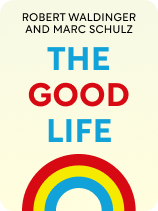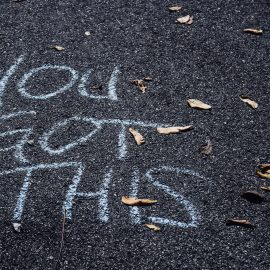

This article is an excerpt from the Shortform book guide to "The Good Life" by Robert Waldinger and Marc Schulz. Shortform has the world's best summaries and analyses of books you should be reading.
Like this article? Sign up for a free trial here.
Do you have any bad relationship habits? How can the W.I.S.E.R. model help you replace these bad habits with good ones?
If something doesn’t go the way it was planned in a relationship, you might default to thinking the worst. But, this is a harmful habit that could ruin a good relationship that otherwise could last a lifetime.
Discover how to break bad relationship habits with some help from The Good Life by Robert Waldinger and Marc Schulz.
Replace Bad Habits
Waldinger and Schulz say that you can improve your relationships by replacing bad relationship habits with good ones. They explain that most of us have bad relationship habits; namely, we default to a particular pattern of behavior, or “coping style,” whenever we feel strain. Unfortunately, these defaults can harm us and our relationships; for example, the authors’ research suggests that if you tend to distance yourself from your problems, you won’t be as happy as someone who confronts their problems.
The default pattern, or habit, that you fall into may seem immutable and out of your control. But Waldinger and Schulz explain that in reality, how you handle a particular situation involves a clear process over which you have some control. Whenever you face an external stressor, you feel some way about it and so you respond with a reaction. For example, if your partner is late for your date (stressor), you may feel neglected and react coldly when they finally arrive. This process occurs so quickly that it feels automatic—but if you can interrupt it and choose to behave in a way that strays from your default, you might be able to improve your relationships.
(Shortform note: In The Obstacle Is the Way, Ryan Holiday suggests that understanding the process by which you judge events can improve other aspects of your life, not just your relationships. Unlike Waldinger and Schulz, who focus on how you react to stressors, Holiday suggests that all events are neutral but spark feelings in us that evoke a reaction. According to Holiday, this perspective can help you see the silver lining in anything. For example, if a grandparent dies, you can choose to be sad, but you can also choose to be grateful for the lessons they taught you. Additionally, it helps you see opportunities in problems—which, other experts suggest, could reduce your tendency to avoid problems and thus increase your happiness.)
Follow the W.I.S.E.R. Model
To interrupt this process of quickly reacting to stressors, Waldinger and Schulz recommend that you use the five-step W.I.S.E.R. model. Whenever you start to feel touchy, watch every aspect of the scenario. Ask yourself what you can see about what’s happening and what you think will happen. By doing so, you force yourself to actually see the situation as it is and buy yourself the time necessary to observe potentially relevant details instead of jumping to conclusions.
Next, interpret the scenario: Ask yourself what story you believe about the scenario and why that story is making you feel a certain way. Then, consider whether that story might be untrue. In the case of your partner who’s late, you might believe that they’re late because they don’t care about you—but it’s possible that they were held up at work and couldn’t get out in time.
The next steps of the W.I.S.E.R. model are to select what you want to do based on the desired result of this interaction, and then engage in that behavior. This requires you to recognize that you can choose to behave in a manner that’s different from what you’ve done in the past. For example, if you normally snap at your partner when they’re late, you might choose to instead calmly ask why they’re late because you’re trying to be more compassionate in your interactions.
Finally, reflect on what you’ve done. Waldinger and Schulz acknowledge that you don’t have to reflect on every interaction. However, they recommend occasionally reviewing the results of engaging in this model to determine how you can improve upon what you’re currently doing. For example, if you find that compassionately asking your partner why they’re late doesn’t improve their chronic lateness, you may wish to select a different tactic.
(Shortform note: The Oz Principle authors warn that some people have a victim mentality that prevents them from taking the steps necessary to grow. If you have one, you may struggle to review the results of engaging in the W.I.S.E.R. model because you think it’s the other person’s responsibility to change. To assess whether you have a victim mentality, ask yourself if you’re open to other perspectives, able to admit when you’ve messed up, and comfortable with sometimes being wrong.)
| Other Ways to Deal With Difficult Situations Other experts have proposed similar processes to help you deal with specific types of difficult situations. In Dare to Lead, Brené Brown advocates following a similar process when you face a failure or setback. First, acknowledge that your emotions were triggered in some way. This will force you to go from feeling to thinking and prevent you from leaping into action—just like the “watch” step does. Second, question the story you’ve automatically created—just as you do in the “interpret” step. Asking yourself what you know about the situation, what you’re assuming, and what feelings are driving the situation will help you separate the facts from assumptions and insecurities. Third, instead of suggesting that you select and engage in a behavior that’s tailored to the results you desire, Brown recommends that you talk through your story aloud with the people involved. The phrase, “The story I’m telling myself…” is especially useful in these conversations—it lets you express your feelings and invite the other person to share their side of the story. Approaching the story this way either shows you the illogical leaps your story made or opens up an honest conversation about her thoughts. |

———End of Preview———
Like what you just read? Read the rest of the world's best book summary and analysis of Robert Waldinger and Marc Schulz's "The Good Life" at Shortform.
Here's what you'll find in our full The Good Life summary:
- That the key to a good life has nothing to do with your career or success
- How to evaluate the current quality of your relationships
- How to improve relationships with your friends, partner, family, and coworkers






